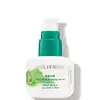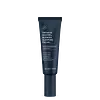What's inside
What's inside
 Key Ingredients
Key Ingredients

 Benefits
Benefits

 Concerns
Concerns

 Ingredients Side-by-side
Ingredients Side-by-side

Water
Skin ConditioningAloe Barbadensis Leaf Juice
Skin ConditioningHelianthus Annuus Seed Oil
EmollientGlycolic Acid
BufferingGlycerin
HumectantSodium Hydroxide
BufferingPropanediol
SolventGlyceryl Stearate
EmollientOpuntia Ficus-Indica Seed Oil
EmollientRubus Idaeus Seed Oil
EmollientCalophyllum Inophyllum Seed Oil
AntimicrobialCaprylyl Caprylate/Caprate
EmollientCetearyl Glucoside
EmulsifyingLeuconostoc/Radish Root Ferment Filtrate
AntimicrobialLactic Acid
BufferingPhytic Acid
Salicylic Acid
MaskingOryza Sativa Extract
AbsorbentRosa Canina Fruit Oil
EmollientSuperoxide Dismutase
AntioxidantCitrullus Lanatus Fruit Extract
Skin ConditioningVigna Aconitifolia Seed Extract
Skin ConditioningSodium PCA
HumectantLens Esculenta Fruit Extract
Skin ConditioningPyrus Malus Fruit Extract
Skin ConditioningCamellia Sinensis Leaf Extract
AntimicrobialCocos Nucifera Oil
MaskingTocopherol
AntioxidantSea Salt
AbrasiveSodium Lactate
BufferingCitric Acid
BufferingLecithin
EmollientPhenethyl Alcohol
MaskingPotassium Sorbate
PreservativeSodium Benzoate
MaskingMaltodextrin
AbsorbentXanthan Gum
EmulsifyingLeuconostoc Ferment Filtrate
AntimicrobialSodium Hyaluronate
HumectantSodium Carrageenan
Emulsion StabilisingDehydroacetic Acid
PreservativeSilica
AbrasiveBenzyl Alcohol
PerfumingSoybean Peroxidase
AntioxidantWater, Aloe Barbadensis Leaf Juice, Helianthus Annuus Seed Oil, Glycolic Acid, Glycerin, Sodium Hydroxide, Propanediol, Glyceryl Stearate, Opuntia Ficus-Indica Seed Oil, Rubus Idaeus Seed Oil, Calophyllum Inophyllum Seed Oil, Caprylyl Caprylate/Caprate, Cetearyl Glucoside, Leuconostoc/Radish Root Ferment Filtrate, Lactic Acid, Phytic Acid, Salicylic Acid, Oryza Sativa Extract, Rosa Canina Fruit Oil, Superoxide Dismutase, Citrullus Lanatus Fruit Extract, Vigna Aconitifolia Seed Extract, Sodium PCA, Lens Esculenta Fruit Extract, Pyrus Malus Fruit Extract, Camellia Sinensis Leaf Extract, Cocos Nucifera Oil, Tocopherol, Sea Salt, Sodium Lactate, Citric Acid, Lecithin, Phenethyl Alcohol, Potassium Sorbate, Sodium Benzoate, Maltodextrin, Xanthan Gum, Leuconostoc Ferment Filtrate, Sodium Hyaluronate, Sodium Carrageenan, Dehydroacetic Acid, Silica, Benzyl Alcohol, Soybean Peroxidase
Water
Skin ConditioningGlycerin
HumectantButylene Glycol
HumectantC12-15 Alkyl Benzoate
AntimicrobialNiacinamide
SmoothingLactobacillus/Punica Granatum Fruit Ferment Extract
Skin ConditioningPotassium Azeloyl Diglycinate
Skin ConditioningOctadecenedioic Acid
EmulsifyingPolyacrylate Crosspolymer-6
Emulsion StabilisingMaltodextrin
AbsorbentRosa Canina Seed Oil
EmollientMel
EmollientSilver
Cosmetic ColorantTapioca Starch
Dimethyl Isosorbide
SolventDicaprylyl Ether
EmollientPropanediol
SolventCaffeine
Skin ConditioningCentella Asiatica Leaf Extract
Skin ConditioningGinkgo Biloba Leaf Extract
Skin ConditioningGlycyrrhiza Inflata Root Extract
Skin ConditioningHyaluronic Acid
HumectantSodium Hyaluronate
HumectantPyruvic Acid
MaskingMandelic Acid
AntimicrobialLactic Acid
BufferingPhospholipids
Skin ConditioningSphingolipids
EmollientSyringa Vulgaris Leaf Cell Culture Extract
Skin ConditioningAscophyllum Nodosum Extract
Skin ConditioningMirabilis Jalapa Flower/Leaf/Stem Extract
Skin ConditioningRosmarinyl Glucoside
AntioxidantCaffeyl Glucoside
AntioxidantGallyl Glucoside
AntioxidantPalmitoyl Tripeptide-8
Skin ConditioningHydrolyzed Opuntia Ficus-Indica Flower Extract
AbrasiveCaprylhydroxamic Acid
Leuconostoc/Radish Root Ferment Filtrate
AntimicrobialT-Butyl Alcohol
PerfumingTocopherol
AntioxidantEthylhexylglycerin
Skin ConditioningDextran
O-Cymen-5-Ol
AntimicrobialBenzyl Alcohol
PerfumingSodium Gluconate
Skin ConditioningPhenoxyethanol
PreservativeWater, Glycerin, Butylene Glycol, C12-15 Alkyl Benzoate, Niacinamide, Lactobacillus/Punica Granatum Fruit Ferment Extract, Potassium Azeloyl Diglycinate, Octadecenedioic Acid, Polyacrylate Crosspolymer-6, Maltodextrin, Rosa Canina Seed Oil, Mel, Silver, Tapioca Starch, Dimethyl Isosorbide, Dicaprylyl Ether, Propanediol, Caffeine, Centella Asiatica Leaf Extract, Ginkgo Biloba Leaf Extract, Glycyrrhiza Inflata Root Extract, Hyaluronic Acid, Sodium Hyaluronate, Pyruvic Acid, Mandelic Acid, Lactic Acid, Phospholipids, Sphingolipids, Syringa Vulgaris Leaf Cell Culture Extract, Ascophyllum Nodosum Extract, Mirabilis Jalapa Flower/Leaf/Stem Extract, Rosmarinyl Glucoside, Caffeyl Glucoside, Gallyl Glucoside, Palmitoyl Tripeptide-8, Hydrolyzed Opuntia Ficus-Indica Flower Extract, Caprylhydroxamic Acid, Leuconostoc/Radish Root Ferment Filtrate, T-Butyl Alcohol, Tocopherol, Ethylhexylglycerin, Dextran, O-Cymen-5-Ol, Benzyl Alcohol, Sodium Gluconate, Phenoxyethanol
 Reviews
Reviews

Alternatives
Ingredients Explained
These ingredients are found in both products.
Ingredients higher up in an ingredient list are typically present in a larger amount.
Benzyl Alcohol is most commonly used as a preservative. It also has a subtle, sweet smell. Small amounts of Benzyl Alcohol is not irritating and safe to use in skincare products. Most Benzyl Alcohol is derived from fruits such as apricots.
Benzyl Alcohol has both antibacterial and antioxidant properties. These properties help lengthen the shelf life of products. Benzyl Alcohol is a solvent and helps dissolve other ingredients. It can also improve the texture and spreadability.
Alcohol comes in many different forms. Different types of alcohol will have different effects on skin. This ingredient is an astringent alcohol.
Using high concentrations of these alcohols are drying on the skin. They may strip away your skin's natural oils and even damage your skin barrier. Astringent alcohols may also irritate skin.
Other types of astringent alcohols include:
According to the National Rosacea Society based in the US, you should be mindful of products with these alcohols in the top half of ingredients.
Any type of sanitizing product will have high amounts of alcohol to help kill bacteria and viruses.
Learn more about Benzyl AlcoholGlycerin is already naturally found in your skin. It helps moisturize and protect your skin.
A study from 2016 found glycerin to be more effective as a humectant than AHAs and hyaluronic acid.
As a humectant, it helps the skin stay hydrated by pulling moisture to your skin. The low molecular weight of glycerin allows it to pull moisture into the deeper layers of your skin.
Hydrated skin improves your skin barrier; Your skin barrier helps protect against irritants and bacteria.
Glycerin has also been found to have antimicrobial and antiviral properties. Due to these properties, glycerin is often used in wound and burn treatments.
In cosmetics, glycerin is usually derived from plants such as soybean or palm. However, it can also be sourced from animals, such as tallow or animal fat.
This ingredient is organic, colorless, odorless, and non-toxic.
Glycerin is the name for this ingredient in American English. British English uses Glycerol/Glycerine.
Learn more about GlycerinLactic Acid is another well-loved alpha hydroxy acid (AHA). It is gentler than glycolic acid but still highly effective.
Its main role is to exfoliate the surface of the skin by loosening the “glue” that holds dead skin cells together. Shedding those old cells leads to smoother, softer, and more even-toned skin.
Because lactic acid molecules are larger than glycolic acid, they don’t penetrate as deeply. This means they’re less likely to sting or irritate, making it a great choice for beginners or those with sensitive skin.
Like glycolic acid, it can:
Lactic acid also acts as a humectant (like hyaluronic acid). It can draw water into the skin to improve hydration and also plays a role in the skin's natural moisturizing factor (NMF) in the form of sodium lactate.
Studies show it can boost ceramide production to strengthen the skin barrier and even help balance the skin’s microbiome.
To get results, choose products with a pH between 3-4.
Lower strengths (5-12%) focus on surface exfoliation; higher strengths (12% and up) can reach deeper in the dermis (deeper, supportive layer) to improve skin texture and firmness over time.
Though it was originally derived from milk, most modern lactic acid used in skincare is vegan. It is made through non-dairy fermentation to create a bio-identical and stable form suitable for all formulations.
When lactic acid shows up near the end of an ingredient list, it usually means the brand added just a tiny amount to adjust the product’s pH.
Legend has it that Cleopatra used to bathe in sour milk to help reduce wrinkles.
Lactic acid is truly a gentle multitasker: it exfoliates, hydrates, strengthens, and brightens. It's a great ingredient for giving your skin a smooth, glowing, and healthy look without the harshness of stronger acids.
Read more about some other popular AHA's here:
Learn more about Lactic AcidLeuconostoc/Radish Root Ferment Filtrate is a natural preservative. It comes from fermenting radish roots with a bacteria called leuconostoc.
Leuconostoc comes from lactic acid.
This ingredient has antimicrobial properties and helps prevent the growth of bacteria in a product.
Leuconostoc is used to make the traditional Korean side-dish, kimchi. It is also used to make sourdough bread (both incredibly yummy foods).
Learn more about Leuconostoc/Radish Root Ferment FiltrateMaltodextrin is a polysaccharide. It is derived from starch such as rice, corn, wheat, or potato starch.
In food, Maltodextrin is used to improve the texture and thicken a product. Due to its structure, it can help create a gel texture. As an emulsion stabilizer, it helps keep the ingredients in a product together.
As a polysaccharide, Maltodextrin has moisturizing properties. Polysaccharides are a type of carbohydrate. The top layer of skin uses polysaccharides to retain water, keeping the skin hydrated.
Maltodextrin is water soluble and has a sweet taste.
Learn more about MaltodextrinPropanediol is an all-star ingredient. It softens, hydrates, and smooths the skin.
It’s often used to:
Propanediol is not likely to cause sensitivity and considered safe to use. It is derived from corn or petroleum with a clear color and no scent.
Learn more about PropanediolSodium Hyaluronate is hyaluronic acid's salt form. It is commonly derived from the sodium salt of hyaluronic acid.
Like hyaluronic acid, it is great at holding water and acts as a humectant. This makes it a great skin hydrating ingredient.
Sodium Hyaluronate is naturally occurring in our bodies and is mostly found in eye fluid and joints.
These are some other common types of Hyaluronic Acid:
Learn more about Sodium HyaluronateTocopherol (also known as Vitamin E) is a common antioxidant used to help protect the skin from free-radicals and strengthen the skin barrier. It's also fat soluble - this means our skin is great at absorbing it.
Vitamin E also helps keep your natural skin lipids healthy. Your lipid skin barrier naturally consists of lipids, ceramides, and fatty acids. Vitamin E offers extra protection for your skin’s lipid barrier, keeping your skin healthy and nourished.
Another benefit is a bit of UV protection. Vitamin E helps reduce the damage caused by UVB rays. (It should not replace your sunscreen). Combining it with Vitamin C can decrease sunburned cells and hyperpigmentation after UV exposure.
You might have noticed Vitamin E + C often paired together. This is because it is great at stabilizing Vitamin C. Using the two together helps increase the effectiveness of both ingredients.
There are often claims that Vitamin E can reduce/prevent scarring, but these claims haven't been confirmed by scientific research.
Learn more about TocopherolWater. It's the most common cosmetic ingredient of all. You'll usually see it at the top of ingredient lists, meaning that it makes up the largest part of the product.
So why is it so popular? Water most often acts as a solvent - this means that it helps dissolve other ingredients into the formulation.
You'll also recognize water as that liquid we all need to stay alive. If you see this, drink a glass of water. Stay hydrated!
Learn more about Water